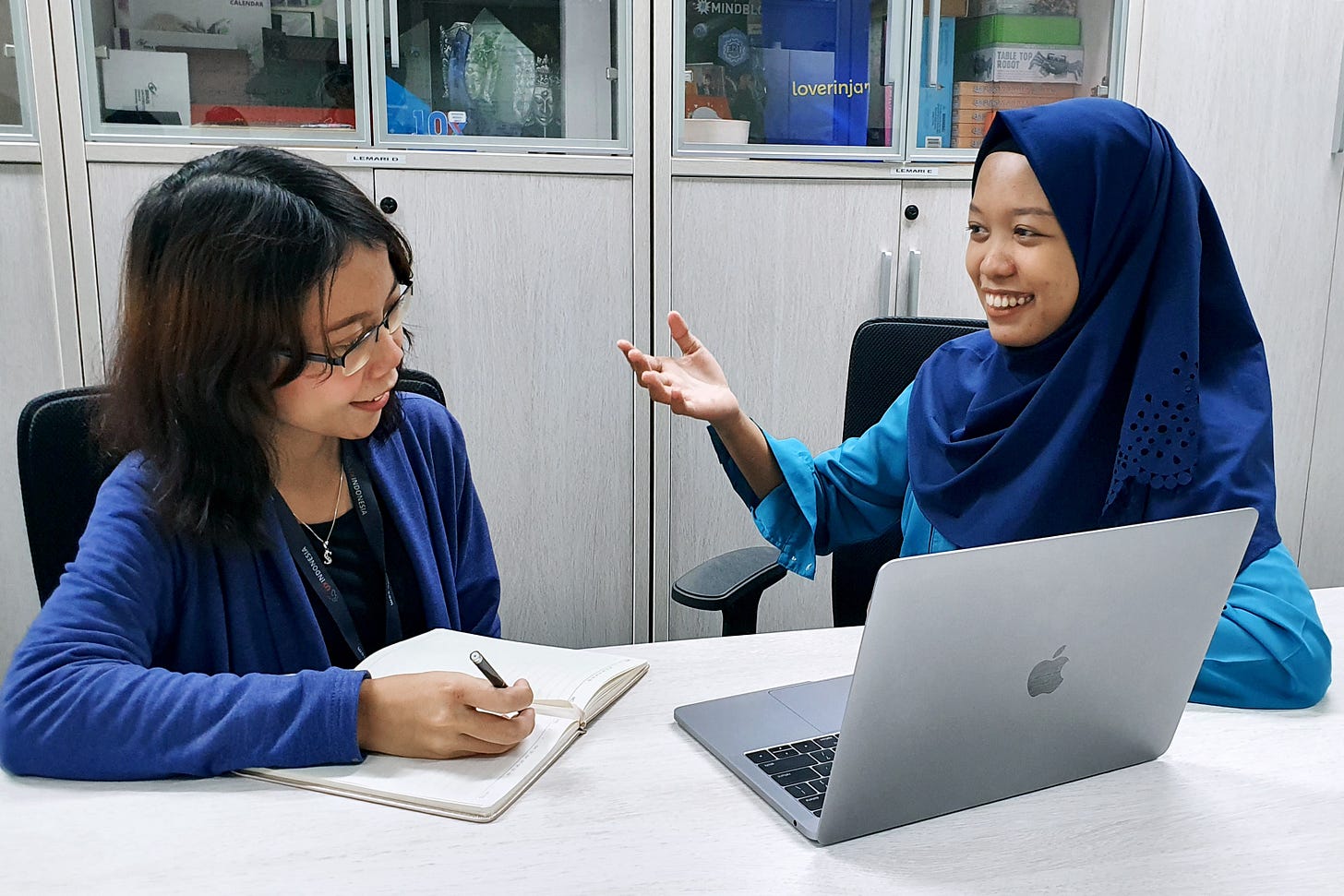🏋🏼 User Interviews: A Cheat Sheet
Reliable ways to frame questions so you can get the best insights • 5 min read

It’s hardly worth building a product that users won’t want to use, so having regular interactions with them is a must for a successful venture. One of the most valuable ways to get input is through user interviews, since the conversations are often rich with qualitative and nuanced information.
However, to run a set of interviews it’s important to have a discussion guide, even if it will only be loosely followed: asking the same questions across interviews can help researchers find patterns, which in turn can lead to actionable insights.
I came across an article by Stéphanie Walter that’s proven to be a very useful bookmark to have: in it they cover the general kinds of questions that are great to incorporate into a discussion, and with great examples to boot.
I. The Main Questions
Open discovery questions – Open questions start with “Why …“, “How …“, avoid closed questions with “Did you …“, “Have you …“, “Were you …“
One of the most important tips is to favor open questions to closed ones: the former allow the interviewee to elaborate, while the latter usually lead to short “Yes“ or “No“ answers.
Understanding user tasks or activities – “Can you describe how …“, “Walk me through …“, “What is the difference between …“
Performing or showing – “Show me how …“, “Let’s pretend I’m X, can you guide me …“
Recalling the past or anticipating the future
Asking people about past events tends to lead to stronger evidence than predicting the future, but
Opinions, points of view, or attitudes and projections
While useful, the information from these answers tend to consist of weaker evidence due to the susceptibility to biases
Talking about problems and pain points – “How does this impact you?“
Sentence completion and drawing
These tend to stimulate the interviewee’s creativity, and might yield interesting insights
II. The Follow Up Questions
It’s quite often that users will say something interesting that merits a follow up. Walter also covers follow up questions that are worth using:
Bouncing back – “You mentioned X, can you tell me more about it?“
Digging further – “Why?“, “What’s the reason for that?“
Asking for clarification – “What do you mean by …“
Rephrasing, interpreting, or mirroring – “So, are you saying that X?“ + wait
Recalling a past experience – “Can you show me how you did X?“
The power of silence
Although it might feel awkward at times, silence can be incredibly powerful. There have been many times where I’ve paused and the interviewee felt compelled to fill the silence by volunteering interesting new information.
The “Maybe not the end of the interview“ – “Is there anything you’d like to add?“
Leaving 10 minutes or so for this question often meant that the interviewee would mentioned something that I hadn’t been aware of before. I’d say it’s one of the most important parts of the interview.
III. Why It Matters
The way we guide the discussion and phrase questions can affect how users react and the information they give. Knowing how to navigate these fine details can mean the difference between getting layered information that’s actionable or getting muddled feedback that doesn’t contribute towards the research objectives. I’ll dive a bit more into user interviews in the coming weeks, but for today I recommend giving Walter's article a read.
Three things I enjoyed this week
🎼 One song
Cloudkicker’s Explore, Be Curious – driven by the low guitar notes, this instrumental feels like it could go one forever, much like the rest of its EP, Let Yourself Be Huge. As a side project of commercial airline pilot Ben Sharp, Cloudkicker’s minimal compositions are perfect for a background sound yet always have something more for those willing to listen a little closer.
📹 One video
CNBC’s What Is The Future Of The Workplace In The U.S.? – the intricacies of hybrid work are still a work in progress, and this video covers some interesting questions on relocation, office anxiety, productivity, and disappearing jobs. I’m also very interested in seeing if these patterns will also show in other parts of the world, like Africa and Latin America.
📖 One article
William Deresiewicz’s Solitude and Leadership – Deresiewicz’s musings on the importance of solitude for efficient leadership are a must read (and re-read):
So I began to wonder, as I taught at Yale, what leadership really consists of. My students, like you, were energetic, accomplished, smart, and often ferociously ambitious, but was that enough to make them leaders?
Most of them, as much as I liked and even admired them, certainly didn’t seem to me like leaders. Does being a leader, I wondered, just mean being accomplished, being successful? Does getting straight As make you a leader?
I didn’t think so.
One of the most intriguing parts for me was Deresiewicz’s thoughts on how to think:
I find for myself that my first thought is never my best thought. My first thought is always someone else’s; it’s always what I’ve already heard about the subject, always the conventional wisdom. It’s only by concentrating, sticking to the question, being patient, letting all the parts of my mind come into play, that I arrive at an original idea.
By giving my brain a chance to make associations, draw connections, take me by surprise. And often even that idea doesn’t turn out to be very good. I need time to think about it, too, to make mistakes and recognize them, to make false starts and correct them, to outlast my impulses, to defeat my desire to declare the job done and move on to the next thing.



